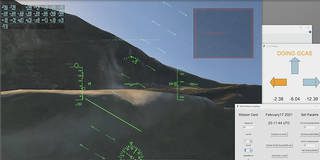“…NASA’s Resilient Autonomy team worked together with the Federal Aviation Administration (FAA) and the U.S. Department of Defense (DoD), to create new autonomous aircraft technology that will help in this endeavor.
This technology is called the Expandable Variable Autonomy Architecture, or EVAA, and it could help prevent accidents in retrofit general aviation aircraft and future autonomous aircraft. EVAA is based on an earlier NASA-developed technology that performs a similar function for military aircraft.
Mark Skoog, principal investigator for autonomy at NASA’s Armstrong Flight Research Center in Edwards, California, led the project on the NASA side. He has almost 40 years of experience with autonomous systems including the Automatic Ground Collision Avoidance System, or Auto GCAS, which was developed for the DoD and has saved the lives of 11 F-16 pilots since its introduction.
The Auto GCAS system, which EVAA is derived from, avoids an imminent ground collision by taking control of an endangered aircraft from the pilot at the last possible moment. This life-saving system warns the pilot, and if no action is taken, it locks the controls and performs an automatic recovery maneuver. Full control is returned to the pilot once the aircraft has cleared the near terrain.
With EVAA, the team changed the algorithms used in the F-16 version of Auto GCAS to make them suitable for non-fighter aircraft like Cessnas or remotely piloted aircraft…”
